Over the last year, I’ve been covering a few games in the long-running The Legends of Heroes series. It’s a franchise I’ve grown to enjoy quite a bit, thanks largely to its fun yet challenging combat system and deep storyline. I’ve had the opportunity to spend time with the latest western release, Trails into Reverie. Without question, this is a great RPG with only a couple of minor issues. Even if you haven’t played previous Trails games, this is one you shouldn’t miss out on.
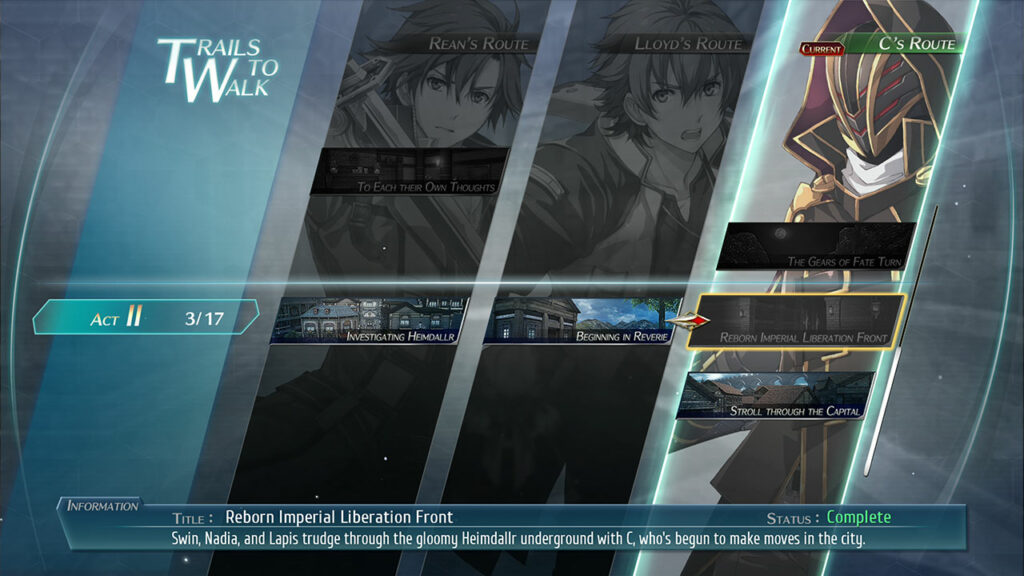
Three storylines to wrap up one big saga
The key aspect of Trails into Reverie is that it ends the multiple plots that make up the nine other The Legends of Heroes: Trails games. The series consists of three Trails in the Sky games, four games taking place in the Trails of Cold Steel storyline, and the two in and around the city/state of Crossbell (Zero and Azure). Meaning, you’re dealing with a lot of different characters, environments, and plots from those games in this conclusion.
In Trails into Reverie, you’re playing three interwoven storylines focusing on Rean Schwarzer and his fellow Class VII compatriots from the Cold Steel Series, Lloyd Bannings and the SSS from Crossbell, and a mysterious third character, known as “C”. Although the plot of each is seemingly very different, as the story progresses, their connection and reliance on each other becomes clear.
The swapping between stories is done well. At times, you’ll be able to switch between the three at will as so long as the story allows for it. In some situations, you’ll need to complete someone else’s section to unlock the next section for another character. There are even parts where you’ll have to actively switch between certain characters to progress.
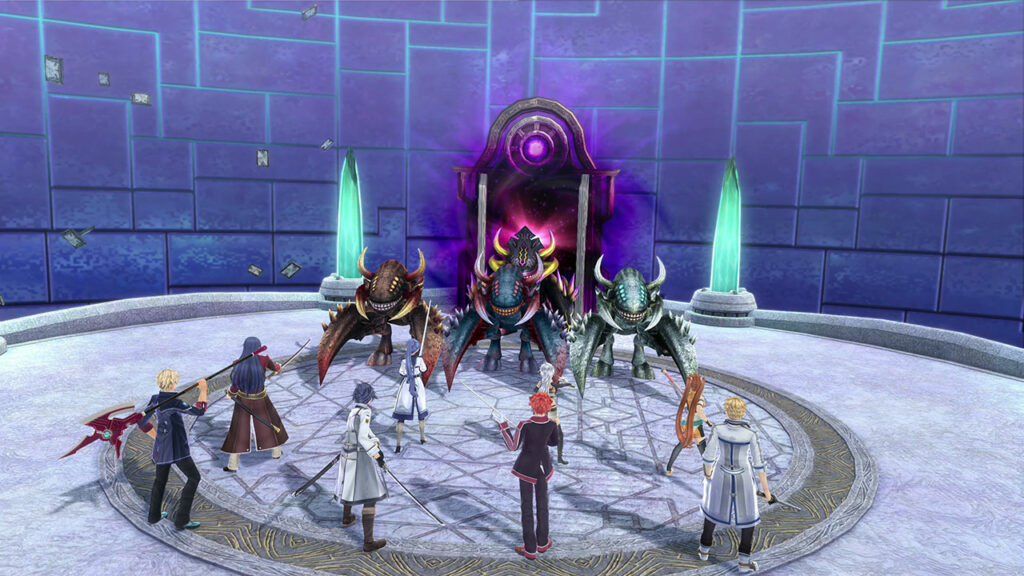
A lot of characters to interact with
Because this is the end of a long-running series, you’re playing a game with so many characters. Not only do you have a massive collection to use in combat, but you’re also interacting with many “familiar” faces from earlier games. Having only played the Crossbell games, I recognized characters from those games, but everyone else was mostly new to me.
The game does try its best to give you some background on everyone, but there are still far too many to keep track of. You can read some summaries on the earlier games, but it still feels like those only skim the surface of the world and the events. If someone has made a Trails primer on YouTube, it should be mandatory viewing before jumping into this game.
As for combat, the sheer number of characters you’ll fight alongside can be overwhelming at times. In most cases, the game tries to limit the squad you can use, so you’re not stuck trying to juggle the best line-up. However, it can still take some time for newcomers to get used to the different styles and skills each has. In my opinion, the combat is the series’ best quality, but I can see it being a lot to handle early on.
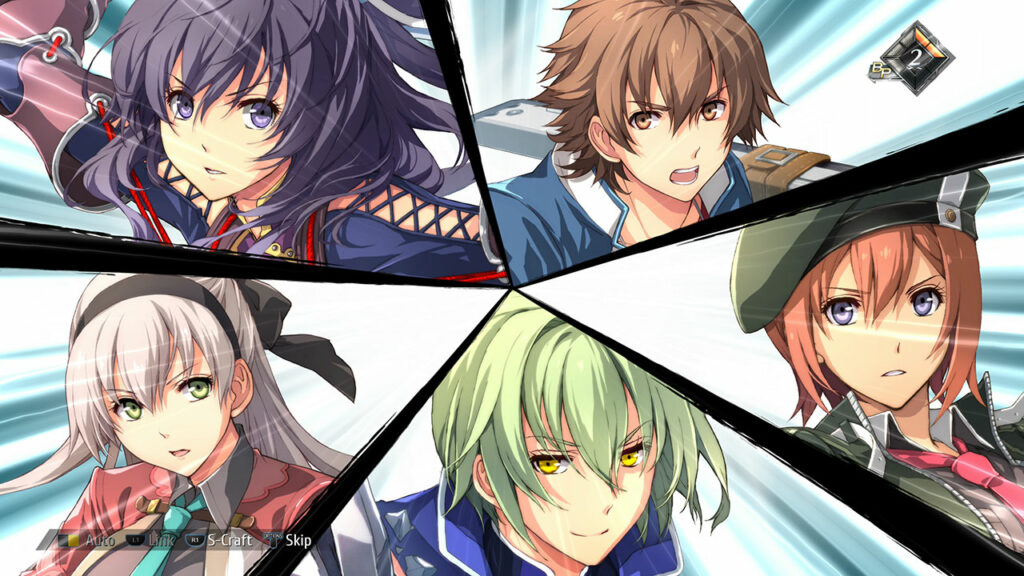
A great combat system that’s further improved
One of my favorite aspects of the two Crossbell games was its combat. That still holds true here. This is a very deep but challenging system to grasp, but once you get the hang of it, you can do some really incredible stuff. I’m not sure what aspects of the combat are borrowed from the Cold Steel arc, but what feels new to me here is implemented really well.
The first new addition is the game’s Link system, which allows characters to”partner” with another member in combat. So, in certain situations, an action by one might trigger the ability to pull off an additional attack with another. Sometimes it can result in an extra attack. Other times, might lead to one character healing their partner to avoid being knocked out. The popular rush attack from previous games is now triggered when you perform certain actions with the link system. If you manage to initiate one of those, they do some remarkable damage.
The other new combat action is called United Fronts. When you perform key attacks, you’ll trigger the option to perform one of three United actions: Attack, Heal, or Arts (perform a magic-based attack that also refills a portion of your EP). Like your S-Craft attacks, these affect the entire battlefield and do some impressive damage. When you have the opportunity to use these attacks, don’t delay.
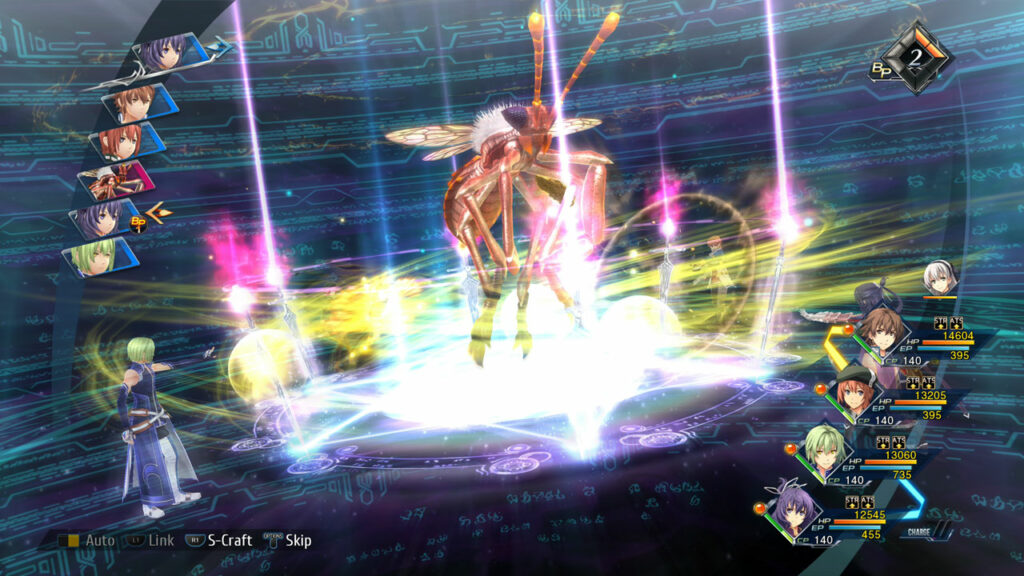
Stock up on revives
Although I love the combat, it’s not perfect. My biggest gripe with it is that while you have so many options available to you, I never felt powerful against most foes. Because this is a continuation, your characters all start at or around level 100. But, that also means that enemies are also in the 100s. It might seem cool that your characters can do 10,000 damage, except until you notice that your foes have over 500,000 HP and your attack barely decreased their health.
At the end of Act III, I was facing off against boss characters around levels 117 and 118, but most of my squad was only around levels 115 and 116. Since I was underpowered going into those battles, my characters were getting knocked out far too quickly. I would have to always make sure I had enough revive items because I would end up using a dozen or so before eventually taking down my foe.
There aren’t enough combat situations in the main story. When the opportunity to grind while moving around an environment, I actively searched for monsters to attack. But after a while, you’re just not earning enough experience to your characters level up. The best way to increase their levels was to spend some time in the Reverie Corridor.
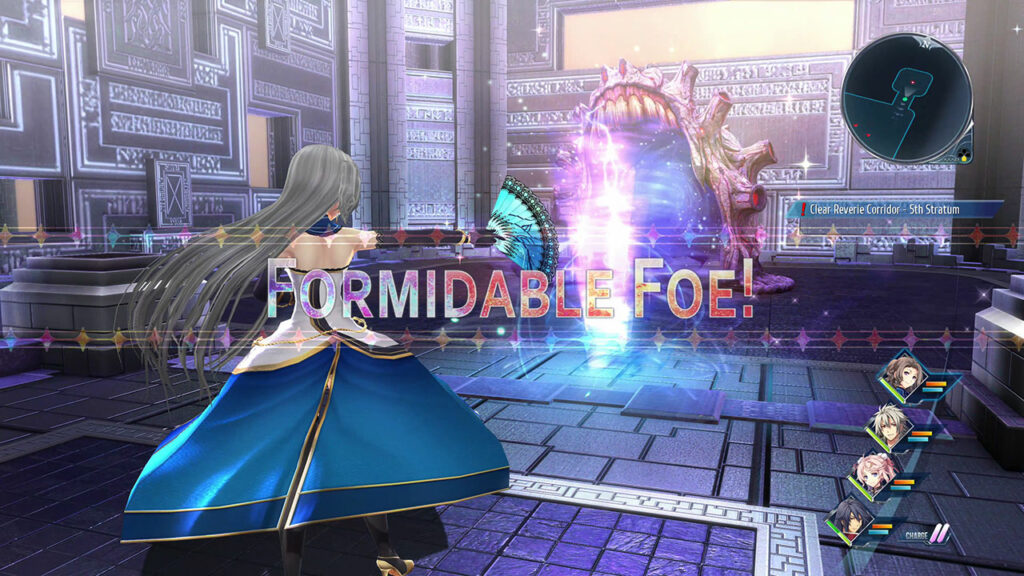
Venturing into the Reverie Corridor
The other major gameplay element is the Reverie Corridor. You gain access to this pretty early in the game and its mystery is slowly unlocked the more time you spend in it. This section is entirely optional, but it is where most of the game’s side content is found and accessed. Also, once you’ve unlocked this part of the story, you can return to it whenever you want, which is nice.
Once here, you’ll traverse a randomly generated dungeon. As you make your way through its multiple levels, you’ll be able to unlock additional content by defeating foes. Key enemies will drop different colored orbs, and you’ll use them to unlock exclusive weapons, new mini-games, side quests, and even additional characters. Considering there aren’t too many battle opportunities during the main quest, the corridor is your best way to level up your characters.
While this is your best area to gain experience, it is entirely optional. However, it’s also recommended because you can earn some of the best items in the game from it. Not to mention, there are a few fascinating mini-games you can unlock, which I had a lot of fun playing with.

An odd choice with the audio
At its core, the story is the main attraction in the Trails series. Most of the game is spent watching the plot move forward. Both Trails from Zero and Trails to Azure were fully voiced in Japanese with English subtitles. For Trails in Reverie, we have both Japanese and English audio options, but with some caveats.
For whatever reason, only about half of the dialogue is voiced in cutscenes. Meaning, you’ll have characters fully voiced having their conversations, then midway through a cutscene, they’ll switch to text only. It’s a bit distracting to go from one section hearing voices to needing to pay attention to the dialogue boxes to follow the story.
Initially, I thought this was an issue with the English dialogue, but even the Japanese dialogue suffers from the same problem. Having played this on the Nintendo Switch, I’m curious if this is a limitation of the Switch’s cartridge size. If this is also the case for the PlayStation and PC versions, then it’s a bit of a disappointment.
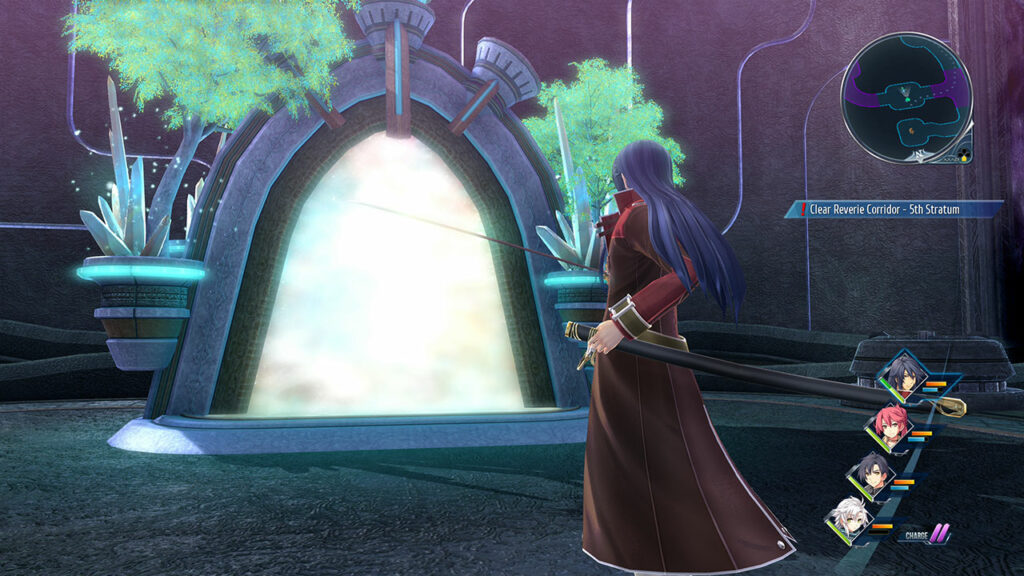
I hope more people get into this series
I’m still not quite finished with Trails into Reverie, but after 30 hours I feel confident with my assessment of the game. I can easily recommend this game to anyone looking for a classic Japanese-styled RPG. Longtime fines will get the most from this “conclusion” to the long-running franchise. However, I think newcomers can still appreciate its varied combat system and deep story. While Octopath Traveller II is still my favorite RPG in 2023, this is a very close second.
A code for the game was provided by the publisher.

